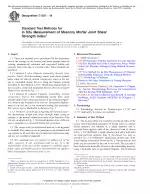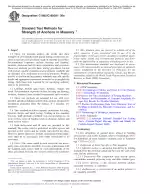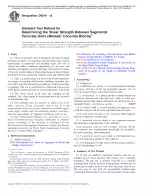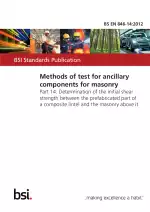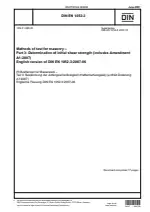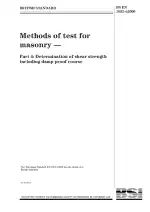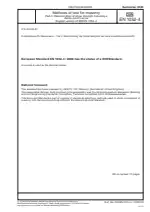ASTM C1531-16 PDF Download
Standard ENStandard Test Methods for In Situ Measurement of Masonry Mortar Joint Shear Strength Index
Also Known As:
ASTM C1531-16 standard provides procedures for evaluating the horizontal in-plane shear behavior of mortar joints in existing unreinforced masonry assemblies. The purpose of this standard is to measure the shear strength index of mortar joints, which can be related to the overall shear strength of masonry walls.
The standard includes three different methods for conducting the test. Method A, which is described in detail, involves controlling the normal compressive stress at the test site using the flatjack method. This method requires monitoring the horizontal displacement of the test unit throughout the test. The test setup for Method A is illustrated in Figure 1.
It is important to note that the shear strength index obtained through this test method is typically based on empirical relationships from tests conducted on early 20th-century unreinforced brick masonry. These relationships assume that the wall shear strength is limited by the shear of the mortar joints rather than shear through the units. The standard advises caution when using these shear strength relationships and recommends referring to codes and standards such as the International Existing Building Code and ASCE Standard ASCE/SEI 41 for formulas relating shear index to wall shear strength.
The standard also provides specifications for testing different types of masonry construction, including hollow ungrouted or solid unit masonry. Additionally, it mentions that the contribution of any existing collar joint mortar to the measured shear strength index should be neglected, unless specifically accounted for in the referencing documents.
Furthermore, it highlights the possibility of conducting the test procedure listed in Method A as an extension of Test Method C1197, which is the two-flatjack test. This allows for the determination of both the deformability of the masonry at the test and the relationship between the expected joint shear strength index and the normal compressive stress.
| ICS Codes | 91.080.30 - Masonry |
| Language(s) | English |
| File Size | 174.1 KB |

